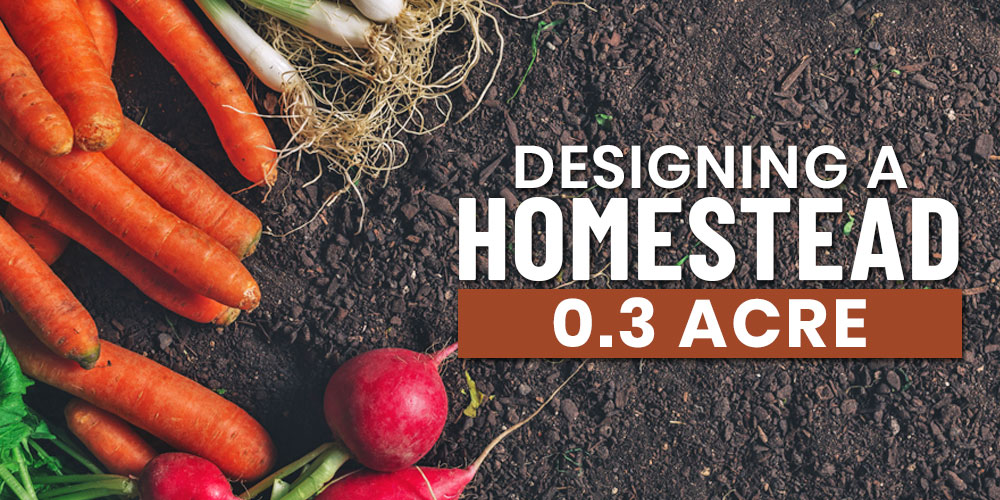
NAVIGATION

Hi, I’m Ryan
Designing a functional homestead on a 1/3-acre homestead layout can be tricky. Thankfully, my years of experience living on a small homestead have made me a master of maximizing a tight space, making a mini-homestead design pretty second nature.

I got the most out of my small homestead by planning ahead. Purposefully designing your backyard homestead can help you to meet the needs and priorities of your current season of life, while leaving some room for growth and experimentation in the future.
1/3-Acre Homestead Layout

Whether it’s a 1/3-acre homestead layout or a farm of 50 acres, I understand that getting started as a homesteader is intimidating. I’ve always loved gardening and working in nature, but I knew that planning my first homesteading venture could be overwhelming if I didn’t have a concrete plan. Starting with a layout design I trusted made my homestead startup a rewarding adventure, and I know this layout can do the same for you.
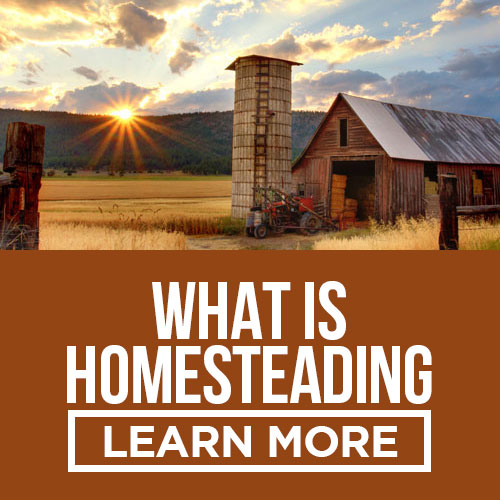 For a homestead layout on a third of an acre, I recommend keeping your house small, and having three 10×10 garden plots, seven 4×8 raised garden beds, one chicken coop, two bee hives, six fruit trees, one storage shed, and a compost pile. This layout has worked well for me and it provides a well-balanced harvest of fruit, vegetables, honey, and eggs.
For a homestead layout on a third of an acre, I recommend keeping your house small, and having three 10×10 garden plots, seven 4×8 raised garden beds, one chicken coop, two bee hives, six fruit trees, one storage shed, and a compost pile. This layout has worked well for me and it provides a well-balanced harvest of fruit, vegetables, honey, and eggs.
In my experience, ground-level and raised bed growing areas should take priority because of their versatility and because they’ll provide lots of fresh veggies for your meals. Take that advice with a grain of salt, because I love to cook, but keep in mind that you’ll want to dedicate the majority of your homestead to your household’s largest nutritional needs or preferences.
This layout will give you over 500 square feet of prime garden space, but it will also leave you room to supply your other needs and incorporate some of your own homesteading hobbies or desires that might be different from mine.
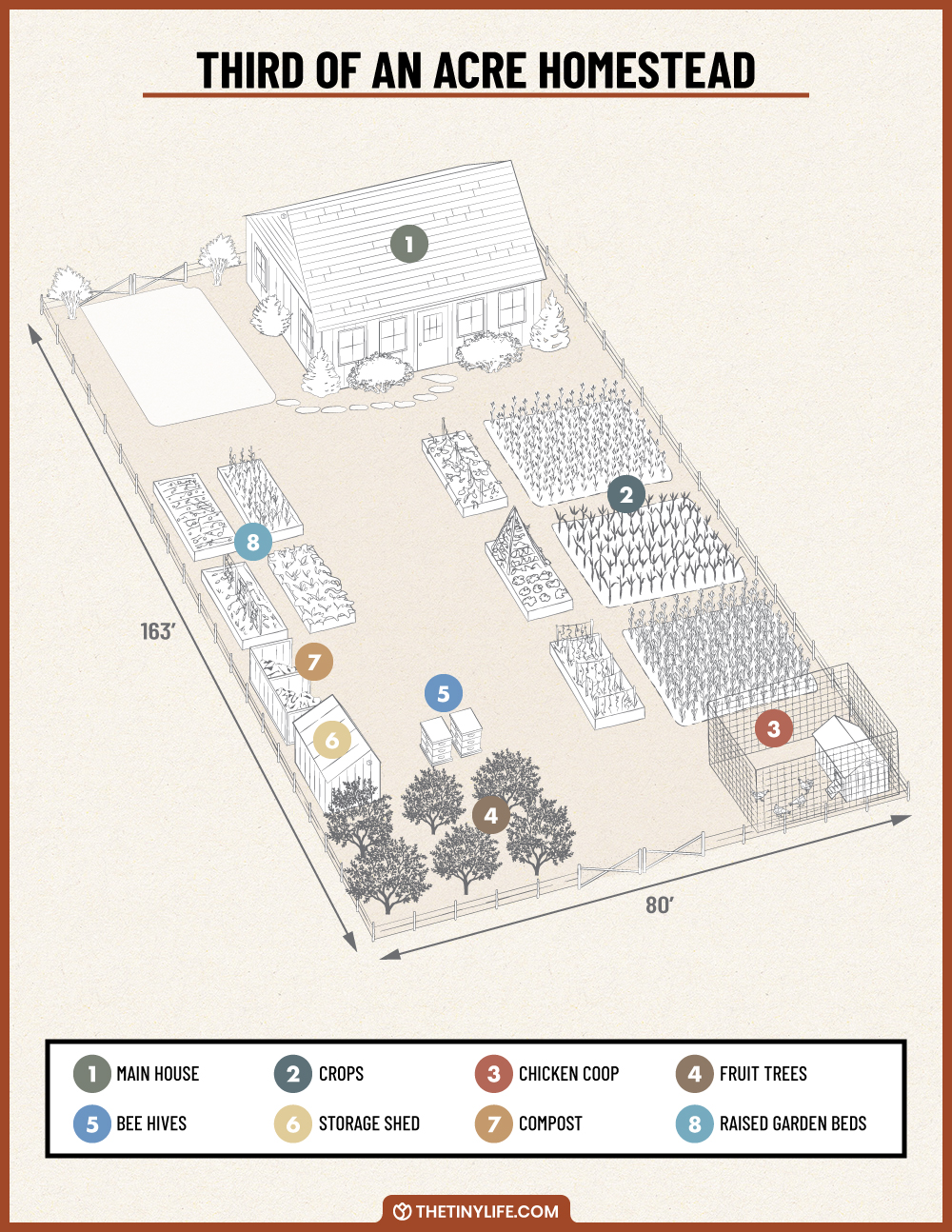
How Much Will A 1/3-Acre Homestead Produce?
A 1/3-acre homestead is capable of producing hundreds and sometimes thousands of pounds of produce every year. These numbers might sound high, but if you consider that one average American eats just under 2,000 pounds of food every year, the numbers will fall into perspective.
What Your Third Of An Acre Homestead Can Produce
- Main HouseIf you’re building your home, keep the design small to maximize your outdoor homestead space, but allow room for indoor pots for herbs.
- CropsThree 10×10 ground-level gardens can easily produce around 300 pounds of vegetables or more.
- Chicken CoopHow many chickens you have will depend on the size of your coop and run. A 10×10 run could comfortably keep eight to 10 chickens, which in turn could produce up to 2,000 eggs a year if you have the right breeds and conditions.
- Fruit TreesSix fruit trees could yield approximately 900 to 1,800 pounds of fruit in a year.
- BeehivesWith two bee hives, you’ll be able to produce an average of 60 to 120 pounds of honey per year.
- Storage ShedIt’s hard to run a homestead without the proper tools and equipment. Storing these necessary items in a sturdy shed will protect them from the elements and keep everything running efficiently. You can also start seedlings here!
- CompostYour compost bin can help feed your garden and your chickens to keep your homestead self-sufficient, but the output will depend on how many people are in the household and how many fresh foods they consume.
- Raised Garden BedsWith seven raised beds you can expect between 200 and 400 pounds of produce in a year.
Why A 0.3 Acre Homestead Is The Perfect Size For Your Farm

Though it might seem small, a 0.3-acre homestead can be ideal for a small family wanting to supplement their grocery haul or keep their food budget lower, and it could feasibly produce enough for one to two people to live self-sufficiently. Growing your own produce with vegetable gardens and fruit trees is an amazing feeling no matter how large your homestead, and adding a few farm animals like chickens or ducks can make your backyard feel like a miniature farm brimming with growing life.
Is 1/3 Of An Acre Enough For A Homestead To Farm?
Even if you aren’t able to own chickens or other animals in your area, you will still be able to grow your own food. Without a chicken coop, you’d have room for more garden plots or raised beds to grow enough produce to make up for the lack of eggs. Chances are you’ll be able to find someone in a short driving distance who sells farm fresh eggs.
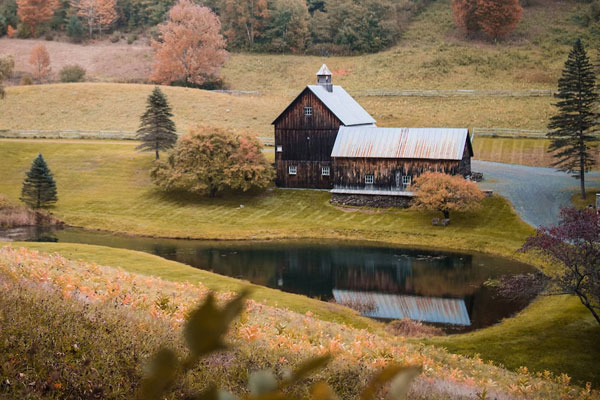
What Are The Dimensions Of 1/3 Of An Acre?
Since 0.3 acres is 14,520 square feet, laying out your homestead takes careful planning. Your plot will be approximately 80 feet by 163 feet, and if you follow my layout, you will be able to fit in all the elements we’ve talked about so far. Always think of your homestead in terms of priorities for what you’ll give space to first, second, third, and so on. This will help you to reap the rewards you want the most, even if your homestead isn’t large enough to plant or raise everything.
How Do You Lay Out A 1/3-Acre Homestead?

When you’re ready to get started setting up your 1/3-acre homestead, follow my layout as far as it will take you with your usable land. Use stakes and take the trouble of measuring and marking where your gardens, raised beds, chicken coop, bee hives, storage shed, compost bin, and trees will be. If your terrain gives you trouble, move some of the placements around until your homestead fits well and flows naturally.
Here’s What I’ve Done
- A tiny house makes the most of property size
- 300 sq. ft. ground-level growing space
- 224 sq. ft. raised bed garden space
- Vermicomposting bins
- 2 bee hives
- Chicken coop
- Up to 20 chickens
- 6 fruit trees
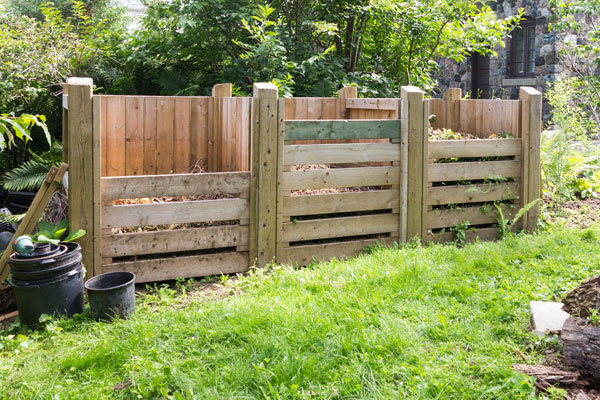
How Big Should A Homestead Garden Be?
With a homestead of 0.3 acres, your homestead garden should be around 300 square feet total. I like to break this up into sections of three 10×10 plots. Breaking up the garden into three sections makes it so much easier to weed, water, care for, and harvest your plants.
A homestead of this size can also accommodate at least seven 4×8 raised beds as well, which will give you 224 square feet of growing space in addition to your ground-level plots. The advantage of further breaking up your growing space into rectangular beds is that they will be much easier to access and maintain.
How Many Fruit Trees Should You Plant On 1/3 Of An Acre?
Six fruit trees is a good number to plant on a 1/3-acre homestead. You could feasibly fit a couple more, or you could opt for less if you’d prefer more of something else.
How Many Berry Bushes Should You Plant On 1/3 Of An Acre?
You should stick with planting eight to 12 berry bushes on your third of an acre. Two to three bushes per person should be plenty of berries for your family, but having a little excess to sell or gift can be nice as well.
Fencing Your 1/3 Of An Acre
Homestead fences can be nice to look at, but they also serve important functions in keeping any livestock in and any predators or grazers out. Some choose metal or chain link to create their fences, and others invest in quality treated wood to build a sturdy, more aesthetically pleasing fence. What materials you use and how deep you dig will depend on your soil type.
What Animals Can You Have On A 1/3-Acre Hobby Farm?

Raising chickens on your third of an acre is one of the best ways to be self-sufficient, as they can help you fertilize and aerate your soil and control pests in your yard and garden.
These little foragers are fairly low maintenance, and with the proper feed and conditions they can provide you with a continuous supply of fresh eggs.
Raising Ducks On A 1/3-Acre Farm
Like chickens, ducks are fairly low maintenance, provide fresh eggs, forage for their own food, and help with pest control. Many people say that ducks are even more docile than chickens, but they do require a pond or small pool, which may or may not fit into your homestead plan.
Raising Bees On A 1/3-Acre Farm
Beekeeping is ideal on a small farm because bee hives don’t take up much room, but they can produce a lot of honey to keep your family supplied with a natural sweetener for your favorite beverages and recipes. Honey also makes a great gift around the holidays.
Is 1/3 Of An Acre Really Enough Space To Grow Your Own Food?

A 1/3-acre homestead layout provides sufficient space for enough gardens, trees, and livestock to grow at least a significant portion of your family’s food for the year. Depending on the size of your household, you can use your third of an acre to become a lot closer to self-sufficiency than you are now, as long as you learn some strategies for planning ahead for the winter season and preserving your excess produce.
How Much Food Can You Grow On A 1/3-Acre Farm?
You can grow approximately 2,300 pounds of food on a 1/3-acre farm in one year. I can’t stress enough how rough of an estimate this is, but even though it’s impossible to predict exactly what your harvests will bring, I always find it helpful to start with a guesstimate that can give me some parameters for what kind of success to aim for.
Estimated Harvest From A 0.3-Acre Homestead With This Layout
- 700 pounds of vegetables
- 320 cartons of eggs
- 1,200 pounds of fruit
- 90 pounds of honey
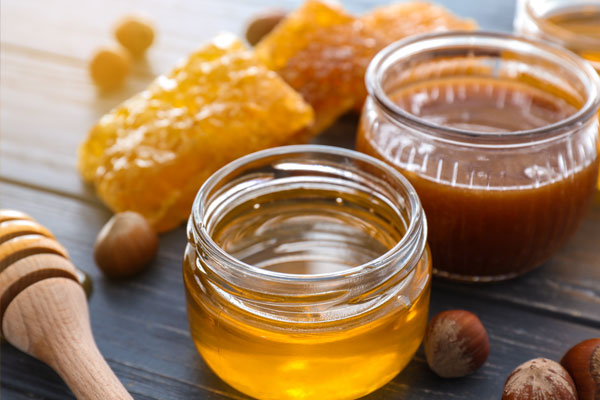
Can 1/3 Of An Acre Of Land Sustain One Person?
Yes, 1/3 of an acre can sustain one person. That’s not to say you wouldn’t have to be a little resourceful and willing to trade and barter with other homesteaders and farmers so that you can have a wider variety in your diet.
Is 1/3 Of An Acre Of Land Enough To Feed A Family Of Four?
With creativity and a little supplementation, a third of an acre homestead layout could feasibly sustain up to two people, but it couldn’t be the sole source of food for a family of four. If you have a family of three or more, though, don’t be discouraged from homesteading your property. Having the ability to provide even half of the food your family will consume in a year is a big deal.
Can You Be Off Grid On A 1/3-Acre Homestead?

You can technically live off the grid on a 1/3-acre homestead, but it will depend on your local area’s guidelines. If you are urban or suburban, there are likely restrictions in place about disconnecting from city water sources and other utilities.
Is 1/3 Of An Acre Of Land Enough For An Off-Grid Homestead?
While a third of an acre could technically be enough land for an off-grid homestead, you should carefully consider how you want to use your precious space. Do you have room for an outdoor bathroom and shower? Are you prepared for the extra work of a composting toilet in your tight space? If so, consider trying out your off-grid options for a while before making any permanent decisions. I’m all about off-grid living, but it can be a rude awakening at first.
Is 1/3 Of An Acre Of Land Enough To Be Self-Sufficient?
0.3 acres of land can be enough to be self-sufficient if you’re living on your own and (possibly) if you’re living with one other person. Self-sufficiency has different levels, though, and no matter the size of your family, you can make steps toward higher levels of food independence and sustainability with your 1/3-acre homestead layout.
How Many Solar Panels Needed To Power Your Homestead?
The exact number of solar panels you will need to power your homestead will depend on the amount of electricity your family uses and what you need to power. That said, it’s good to plan on 10 to 12 panels for every 1,000 square feet of living space and powered storage or work spaces.
Can A 1/3-Acre Homestead Be Profitable?
While a 1/3-acre spread can technically be profitable, you need to consider how much you want to sell vs. how much you want to consume.
Now that you’re armed with this proven design and some handy tips, you’re prepared to start building your 1/3-acre homestead layout. Don’t feel alone in your venture. Reach out and connect with other homesteaders or farmers in your area, and you might find that your learning journey won’t be as bumpy as you thought it might be.
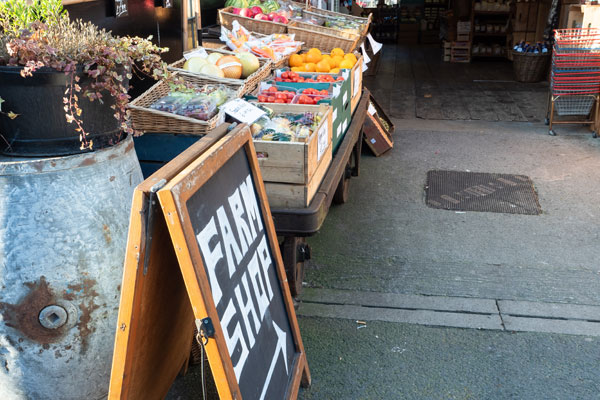
Your Turn!
- What animals have you successfully raised on your 1/3-acre homestead?
- How large of a profit have you been able to bring in with your small farm?





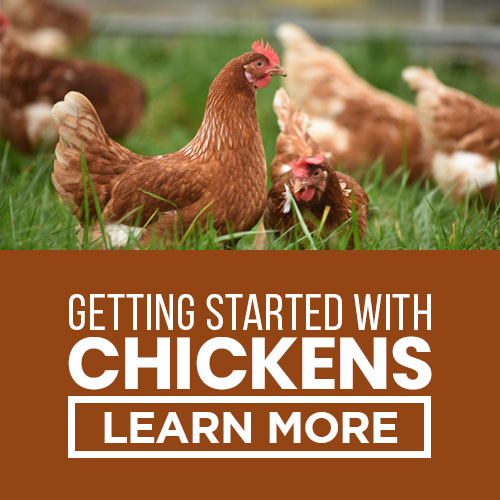




Leave a Reply